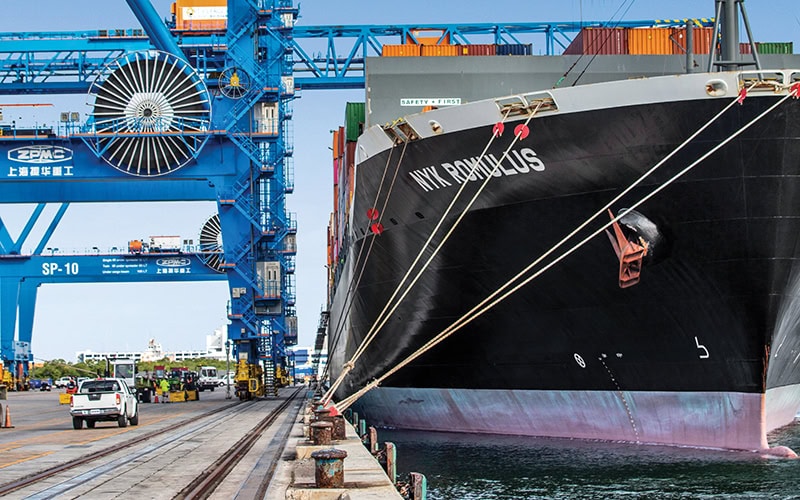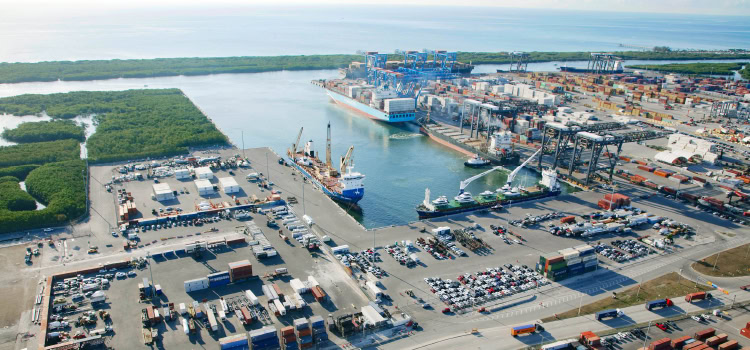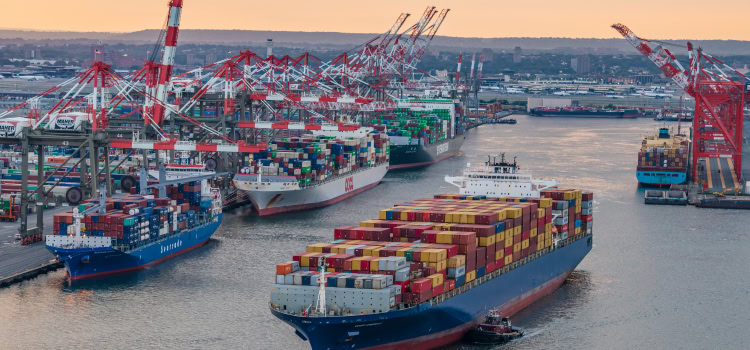Port Profiles

These leading U.S. gateways make gains in operational efficiency and offer robust infrastructure to support increased cargo demands.
Port Everglades Surges in Global Operational Performance Rankings after Latest Improvements
1850 Eller Drive | Fort Lauderdale | FL 33316 | 954-523-3404 | www.PortEverglades.net
Port Everglades has risen sharply among world ports when it comes to operational performance. The port is no. 2 in the United States for trade with Latin America and serves 150 ports in 70 countries.

Port Everglades created much-needed new cargo berthing when it extended its Southport Turning Notch turnaround area from 900 feet to 2,400 feet.
A simple but powerful number – 65 – demonstrates the remarkable strides that Port Everglades has made in recent years toward becoming one of the most operationally efficient seaports in the world. In 2021, the port, which is located in Broward County, ranked a respectable no. 116 globally in the Container Port Performance Index (CPPI), a rating developed by the World Bank and S&P Global Market Intelligence to assess the operational efficiencies of ports.
By 2022, Port Everglades had improved that ranking to no. 89. And by 2023, the port had jumped all the way to no. 65, making it the third most-efficient port in the United States and Canada, the no. 1 port in the critical global hub of Florida, and among the top 20% of ports in the world.
“This is not just about Port Everglades itself but it’s also about the broader port community,” says Jorge Hernández, Director of Business Development for the port.
The CPPI rankings center on how long container vessels stay in a port. Port Everglades, which has service to 150 ports in 70 countries, has made several key infrastructure improvements in recent years that help to demonstrate why the port has shot up the index so sharply in just two years.
Port Everglades has emphasized in its master vision plan the expected demands of its business lines, which include cargo, cruise, and energy, and what steps the port needs to take to accommodate those future demands.
Among the most important steps was completing the biggest infrastructure project in the port’s history, adding five new cargo berths in the process. The project, which was completed in 2023, also encompassed landside infrastructure improvements to support the acquisition of six additional Super Post-Panamax gantry cranes.
“We don’t think it’s a coincidence that our improvements in the CPPI rankings happened simultaneously when this project came online with the infrastructure, the new berths, and the cranes,” Hernández says.
More improvements are in the works, including replacing bulkheads throughout the port, as well as expanding and completing a long-awaited deepening and widening of the port’s navigational channel to allow for larger ships.
Port Everglades is a landlord port; the efforts of its terminal operators to strengthen performance and gain efficiencies have been critical. That includes two operators adding appointment systems in the past year that are enabling a steadier flow of trucks entering the port to reduce congestion in peak hours.
Ultimately, the port’s improved operational efficiency will boost the surrounding community and region. An economic impact study says Port Everglades generates more than $26.5 billion worth of business activity annually and supports more than 10,000 direct local jobs and more than 190,000 jobs across the state.
The Port of New York and New Jersey: A Gateway for Global Trade
4 World Trade Center | 150 Greenwich Street | 17th Floor | New York, NY 10007 | www.portnynj.com
The Port of New York and New Jersey is the busiest gateway on the U.S. East Coast, serving one of the world’s most concentrated consumer markets.

PHOTO Courtesy of the Port OF NEW YORK AND NEW JERSEY
As the largest port on the U.S. East Coast, the Port of New York and New Jersey is the premier gateway with facilities and options to move your cargo quickly, cost-efficiently, and in an environmentally sustainable way. We enable access to a large and concentrated consumer market, reaching 46.3 million people within a four-hour drive, and many more in key inland markets through our direct connections to major interstate highways and two Class I railroads.
A Global Gateway
From our terminals, rails, and roads, the port efficiently delivers goods to local and inland consumers and businesses, reaching 134 million people within 36 hours by rail or truck, as well as U.S.-produced exports to the world’s buyers. The Port of New York and New Jersey is the first call for more than 75 percent of arriving vessels, which means their cargo is often delivered by rail to inland destinations before the vessels arrive at the next U.S. port.
More than Containers
Our five container terminals welcome the world’s biggest ships, and our ExpressRail network’s rail lift capacity is the largest on the U.S. East Coast. Port facilities also include three auto terminals, one cruise terminal, cross harbor rail and barges, and access to more than 1 billion square feet of industrial space within 50 miles. We serve container shipping, automobile processing, bulk and breakbulk cargo, warehousing and distribution, cruise passengers, intermodal, refrigerated cargo, foreign-trade zone activities, and maritime support industries.
Growing and Improving
With the support and collaborative efforts of port partners and the Council on Port Performance, we remain steadfast in our commitment to deliver cargo efficiently and reliably. The port was the second busiest in the nation for the first half of 2024, moving over 2.8 million loaded TEUs.
These volumes represent a 13 percent increase compared with the same period in 2023. With the assistance of federal and state grants, the port is advancing infrastructure projects to create more efficient road and rail networks and collaborating with the U.S. Army Corps of Engineers on plans to deepen our channels to -55 feet mean low water, allowing the port to welcome the industry’s largest container vessels.
